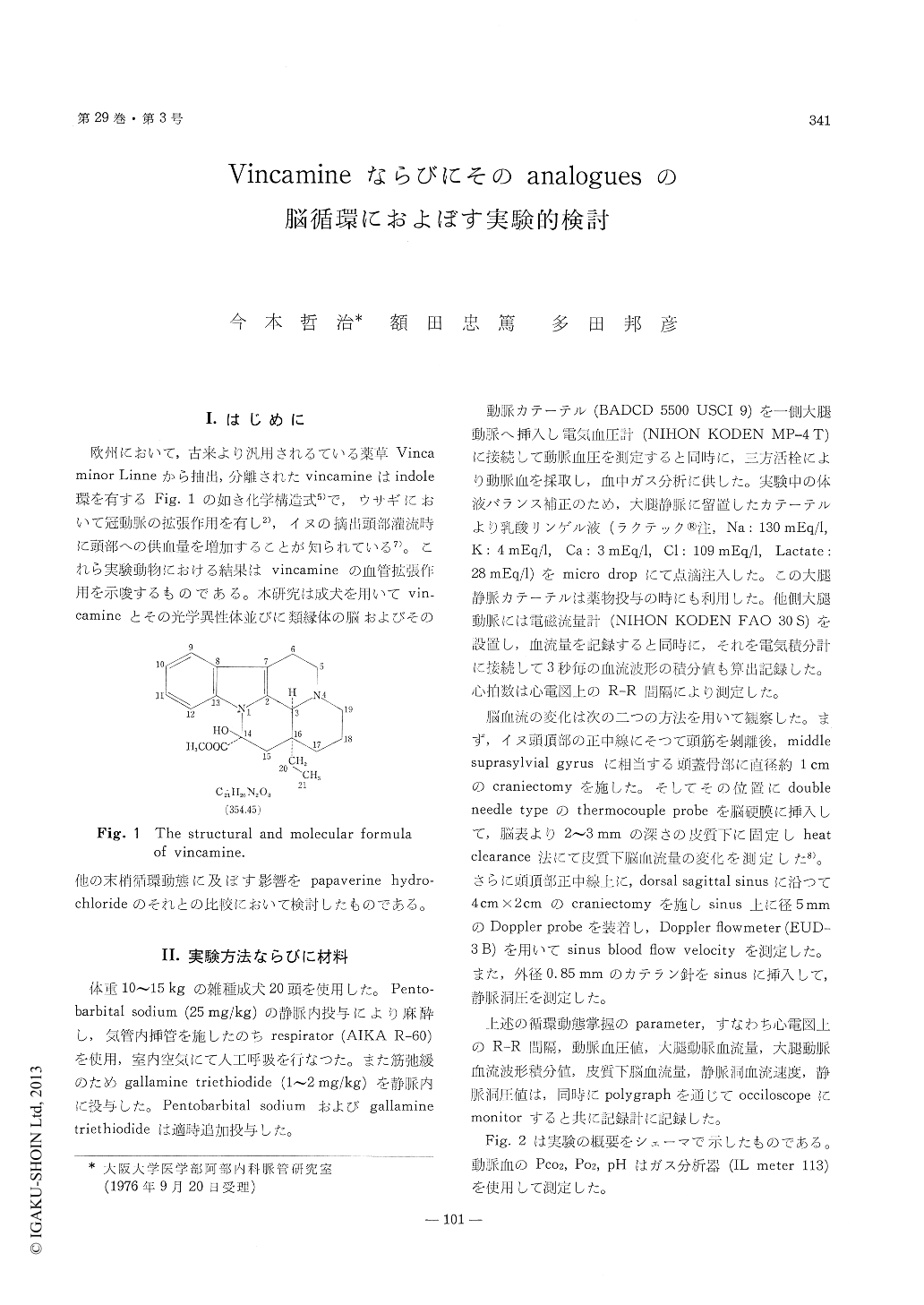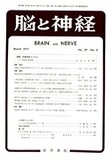Japanese
English
- 有料閲覧
- Abstract 文献概要
- 1ページ目 Look Inside
I.はじめに
欧州において,古来より汎用されるている薬草Vincaminor Linneから抽出,分離されたvincamineはindole環を有するFig. 1の如き化学構造式5)で,ウサギにおいて冠動脈の拡張作用を有し2),イヌの摘出頭部灌流時に頭部への供血量を増加することが知られている7)。これら実験動物における結果はvincamineの血管拡張作用を示唆するものである。本研究は成犬を用いてvin—camineとその光学異性体並びに類縁体の脳およびその他の末梢循環動態に及ぼす影響をpapaverine hydro—chlorideのそれとの比較において検討したものである。
Vincamine is an alkaloid of Vinca minor Linne.This study was performed to evaluate the effects ofvincamine on cerebral and peripheral circulationsin dogs.
Mongrel dogs were anesthetized by pentobarbitalsodium and managed under an intubated respiration.The arterial blood pressure was monitored througha canulated femoral artery. The femoral blood flowwas measured in the other side by means of electromagnetic flowmeter. Heart rate was calculated fromR-R interval on the ECG recording pattern. Theinfluence of vincamine on cerebral circulation wasevaluated by the measurement of subcortical bloodflow change and sagittal sinus flow. Subcorticallocal cerebral blood flow change was detected bya heat clearance method. The sagittal sinus flowvelocity was measured by ultrasonic doppler tech-nique and sinus pressure was measured throughthe catheter inserted into the sinus. These he-modynamic parameters were recorded simultaneou-sly by means of the polygraphy.
The effects of the intravenous bolus injectionof vincamine at dosis of 0.5, 1.0, 1.5, 2.0, 3.0 and4.0mg per kg of body weight on cerebral andsystemic circulations were observed in comparisonwith papaverine effect. The intravenous bolusinjection of vincamine at dosis of above 1.0mgper kg of body weight produced a marked increasein subcortical cerebral blood flow, sinus pressureand sinus flow velocity. This effect was shorterin a duration of action, less in lowering arterialblood pressure and less in increasing heart ratethan each that of papaverine hydrochloride. Withregard to dose response, the optimal dose of vinca-mine to increase cerebral blood flow was 1.5mgper kg in dogs. The intravenous drip infusion ofvincamine at dose of 0.60 mg per kg of body weightper minute for ten minutes maintained approxima-tely eight percent increase in local subcortical ce-rebral blood flow.
Both 3-epivincamine and apovincamine whichwere vincamine analogues were as effective as vin-camine with regard to increase in cerebral bloodflow.
It was suggested that vincamine, 3-epivincamineand apovincamine had marked increasing effectson cerebral and peripheral blood flow but effectedlittle on cardiovascular system.

Copyright © 1977, Igaku-Shoin Ltd. All rights reserved.


